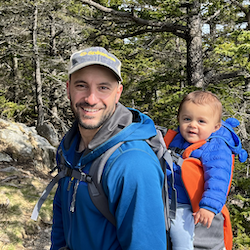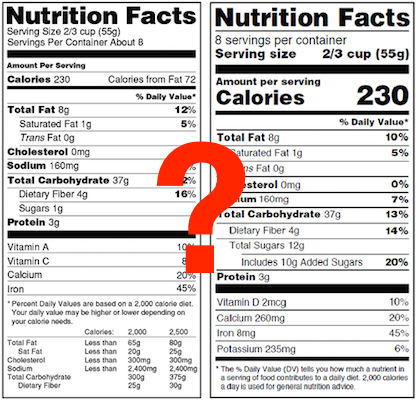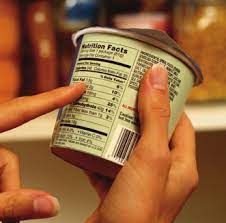Accounting for Moisture Loss in Nutrition Analysis
ReciPal lets you add ingredients, select their quantities, and automatically generate a government compliant nutrition label based on your recipe. However, to make accurate labels you must also take into account the cooking process. Moisture loss is an important factor to consider that occurs during cooking.
When moisture is lost through the cooking process it reduces the weight of your final product. Since water has no nutritional value, this process doesn’t remove nutrients, but rather makes them more concentrated.
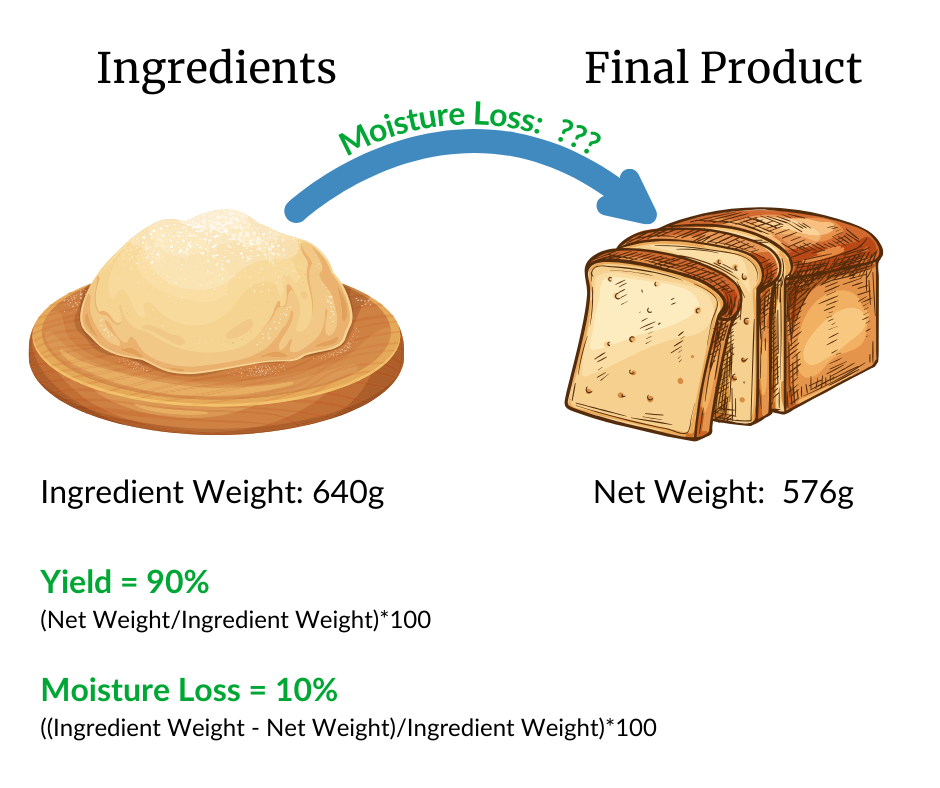
Accounting for Moisture Loss
In ReciPal you can account for moisture loss by adjusting the net weight of the final product accordingly. By reducing the weight of your final product it makes the nutrients more concentrated. This change is reflected in your yield percentage which compares the weight of the inputs (ingredients) to the weight of the output (final product). Underneath the yield, ReciPal will also show the percentage of moisture loss and waste that make up for any difference in weight between the inputs and the output.
Yield = weight of total inputs / weight of total output
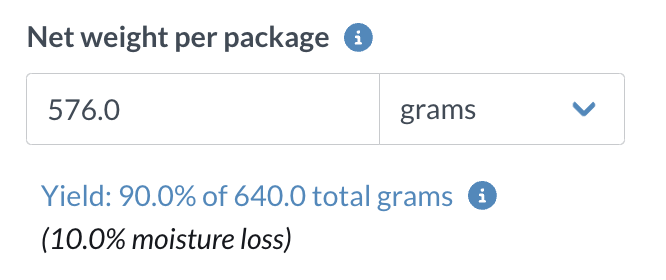
In this example, my recipe produces just one package. Keep in mind, ReciPal uses the net weigh per package. So, if your recipe produces multiple packages then you need to account for that in your adjustment of the net weight. Let's say we tripled this recipe so that it made three loaves of bread instead of one. The net weight of the ingredients would be 1920g (640g x 3). To find the net weight per package you could either weigh the contents of one package (i.e. one loaf of bread) to get the net weight per package or divide the total net weight by the number of packages. So 1728g/ 3 packages = 576g / package.
Using Moisture Loss % to Calculate Net Weight
If you don't know the final weight, you can use the moisture loss % to figure it out. In many cooking processes there is a standard amount of moisture loss that occurs. In this case, you can just reduce the ingredient weight by that percentage. Let's say you’re baking bread and the weight of the ingredients is 640 grams. You don’t know the final weight of the product but you do know that the cooking process creates ~10% moisture loss. Here, you would reduce the weight of the ingredients by 10% to give you the final net weight.
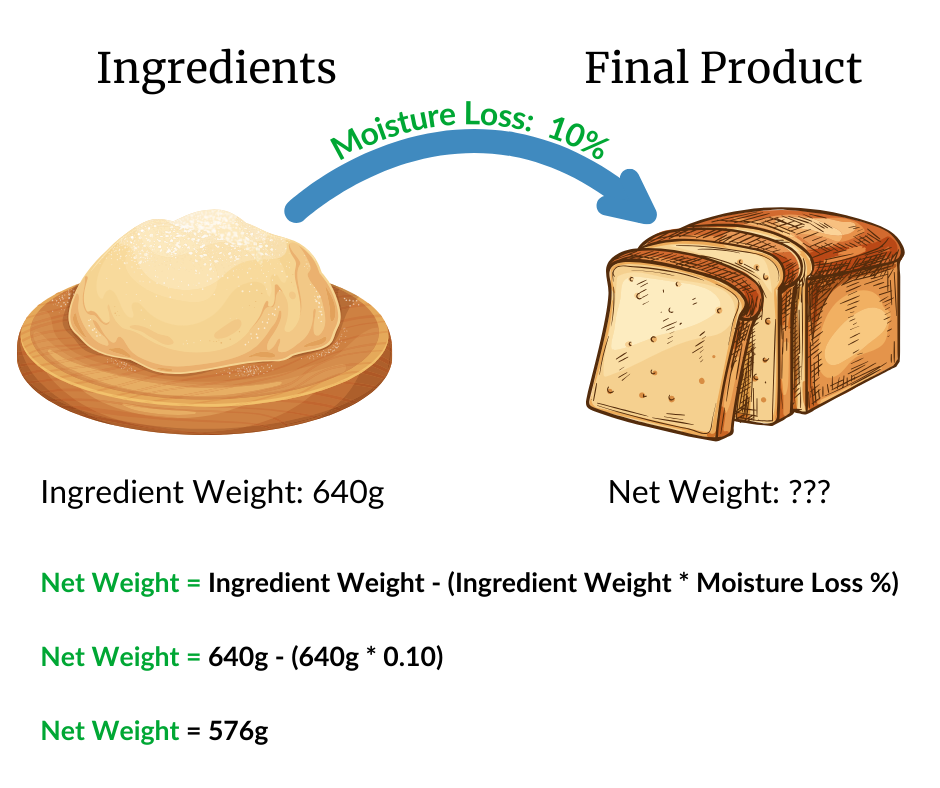
(UPDATE 1/14/25) Directly Enter Moisture Loss %
We've added a new feature that allows users to directly enter a moisture loss %. This feature means that if you know the % moisture loss then you don't have to do any calculations to figure out the final weight of your product.
To use this feature, you must first select to set up your recipe by serving size weight. In this method, you simply enter the final weight of a serving vs. the weight of a package, the number of packages, and the number of servings per package. Once you enter the serving size weight, you can then input the percentage of moisture loss. That's it!"
In this case let's say that 1 serving of bread weighs 50g. We'd just enter that 50g serving size weight and the 10% moisture loss to automatically calculate the nutrition.

It's important to note that in ReciPal we define moisture loss % as the difference between the total weight of the ingredients and the total weight of the end product. So if you started with 100g of ingredients and ended with 80g we'd consider that a 20% moisture loss. This is different than some other systems that calculate moisture loss % as the difference between the total water content of the product.
Selecting Ingredients
The ReciPal database leverages USDA ingredient information. In some cases, you can opt to select a cooked ingredient with the nutrition information already set up to account for changes from the cooking process. So, if you’re using an ingredient like this you don’t need to worry about moisture loss.
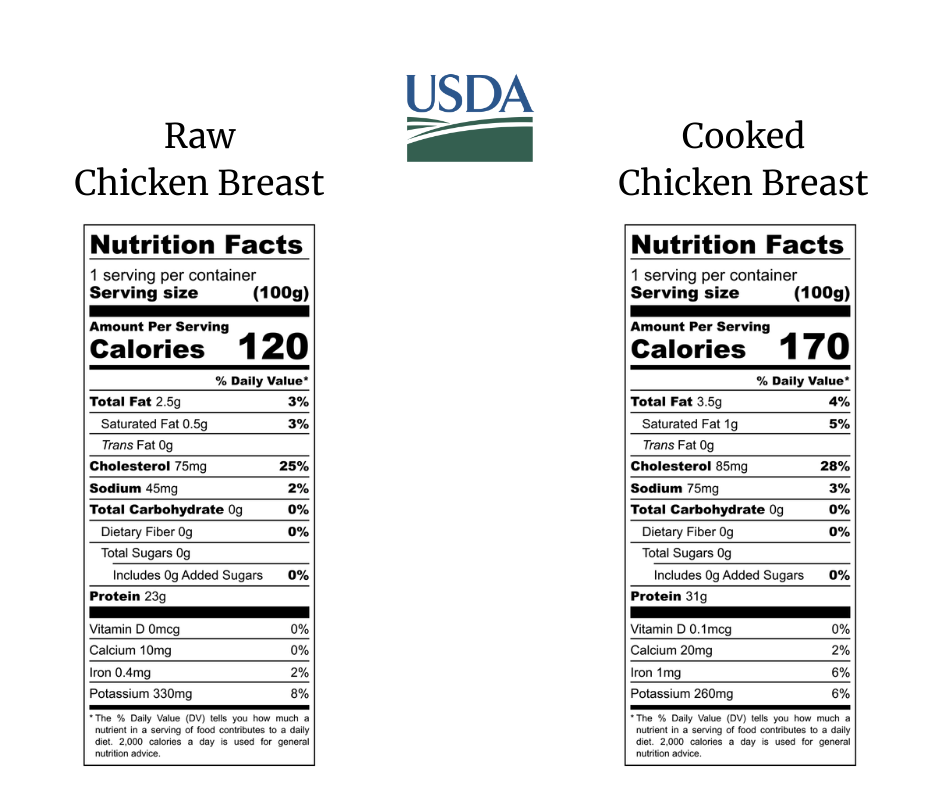
It's important to keep in mind that the form of an ingredient is tied to the amount that is required in a recipe. It will take a greater weight of a raw ingredient to produce the same weight of a cooked ingredient. For example, 4 pounds of raw chicken breast may only weigh 3 pounds after being cooked. Therefore, your best bet is to stick with whatever forms your recipe measurements are based on.
Waste Percentage
One other factor to consider when accounting for the cooking processes is the waste percentage. In some cases, not all of the ingredients make it into the final product. For example, there could be batter left behind in a bowl or marinade that doesn’t absorb into the product. In these cases, you want to remove both the weight of those ingredients and their nutritional content so that you don’t inadvertently inflate the nutrients. Say you have 1 cup of marinade but only 25% is absorbed by the product - the waste would be 75%.
If you prefer to learn over video, we cover this topic here on our YouTube Channel and embedded below:
Wrapping It Up
It's important to consider your cooking process and not just the ingredients that go into your recipe to create accurate nutrition labels. You can adjust the net weight to account for moisture loss and set a waste percentage to account for ingredients that don’t make their way into the final product. Doing this lets you accurately represent the cooking process and the impact it has on the nutrition of your product.
